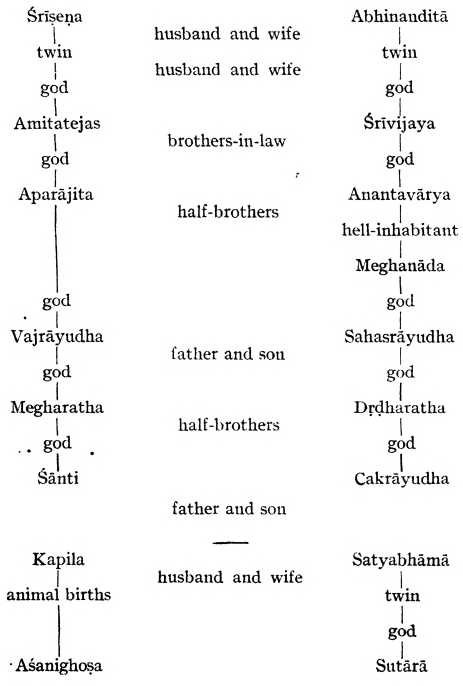Trishashti Shalaka Purusha Caritra
by Helen M. Johnson | 1931 | 742,503 words
This is the English translation of the Trishashti Shalaka Purusha Charita (literally “The lives of the sixty-three illustrious People”), a Sanskrit epic poem written by Hemachandra in the twelfth century. The work relates the history and legends of important figures in the Jain faith. These 63 persons include: the twenty four tirthankaras , the t...
Introduction to volume 3
Book IV of the Triṣaṣṭiśalākāpuruṣacaritra consists of the biographies of five Arhats, five Baladevas, five Vāsudevas, five Prativāsudevas, and two Cakravartin. The Śreyāṅsanāthacaritra includes the biographies of the first Baladeva, Vāsudeva, and Prativāsudeva and each of the four following biographies of the Arhats includes one of a Baladeva, Vāsudeva, and Prativāsudeva. The lives of the first group, Acala, Tripṛṣṭha, and Aśvagrīva, are treated at great length. Indeed, all the biographies of the Baladevas, Vāsudevas, and Prativāsudevas are given in more detail in the Triṣaṣṭi than anywhere else I could find. They are treated very cursorily in other works.
The subject of Hemacandra’s sources and his imitators would require a volume in itself; as, in one form or another, the well-known episodes in Hindu, as well as Jain, literature are incorporated in the Triṣaṣṭi0. Naturally, Hemacandra follows early Jain versions rather than Hindu ones. The story of Sanatkumāra is a popular one. The versions best known to Europeans are those from the commentary to the Uttarādhyayanasūtra, edited by Jacobi in his Māhārāṣṭrī Erzählungen and translated by Meyer; the one from Haribhadra’s Nemināthacaritra, also edited and translated by Jacobi; and the one in the Kathākośa translated by Tawney. It occurs also in the Pārśvanātha-caritra, treated by Bloomfield in his Life and Stories of the Jaina Savior Pārśvanātha. Hemacandra’s version is the most elaborate of all.
Book V is devoted entirely to Śāntinātha with a wealth of detail equaled only in the Adīśvaracaritra and the Mahāvīracaritra. But, as Śāntinātha is one of the favorite Tīrthaṅkaras with Jain authors, even Hemacandra’s detailed biography is exceeded by others, e.g. Munibhadra. Śāntinātha doubles as a Tīrthaṅkara and Cakravartin. As the reincarnations that run through the biography and play such an important part in it are rather difficult to keep in mind, I give a table of them.

Names left column: Śrīṣeṇa, Amitatejas, Aparājita, Vajrāyudha, Megharatha, Śānti, Kapila, Aśanighoṣa.
Names right column: Abhinanditā, Śrīvijaya, Anantavārya, Meghanāda, Sahasrāyudha, Dṛḍharatha, Cakrāyudha, Satyabhāmā, Sutārā.
